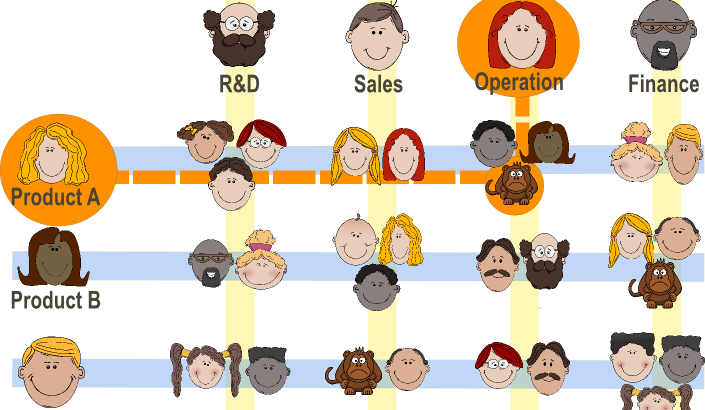The recent years have seen the demise of one manager one employee concept; it is now common for a corporate denizen to have multiple managers, with each one handling different areas of work assignment, this arrangement is known as matrix. The matrixed employee is also saddled with the additional burden of negotiating among the competing objectives of multiple bosses, some of who may be rarely seen in person. No wonder the matrix is so difficult to make it work and most of the employees call it a nightmare. Let’s look at some of the common challenges faced by employees working in a matrixed organization.
Power Struggles
Most of the manager’s dislike sharing resources or being told that the results they are accountable for are less important than someone else’s. All the power struggles that are inherent in any organization are magnified in a matrix, where managers are often competing for resources with other managers in other locations, whom they may not know personally and whose business they do not see. The matrix increases the number of interdependencies and reciprocal need among these managers.
Determining? Best Practices?
If the matrix is being used to drive integration and the introduction of more core products and services across locations, regions, or lines of business, someone needs to determine what will be standardized and where differences are legitimate and allowable. This is not easily done and can be a significant source of conflict.
Slow Decision-Making
The matrix gives equal weight to two or more business dimensions. Ideally, this tension results in better and more creative solutions to problems and opportunities. It certainly means more meetings, telephone calls, and video conferences and more people participating in decisions. If the organization does not have good meeting practices, clear decision rights, effective technologies and practices for remote communication, and strong conflict resolution processes, the result can be slow decision making or no decisions at all.
Personal Stress
Most people prefer a work environment of clarity, where they know ? what my objectives are, what I am responsible for, and most important, who am I accountable to. ? A matrix requires a certain amount of personal flexibility and comfort with ambiguity and change. It also requires an ability to understand and adapt to the styles and expectations of two or more supervisors, the fortitude to confront and sort out conflicting directives that may come from above, and the ability to build strong and productive relationships with people who may be located in another city or on another continent.
What is the way out?
In a matrix, many interactions are more a series of requests and promises than they are sharply defined tasks and responsibilities. Although job descriptions are important in many companies for setting compensation, they are less useful as a way to describe where one role ends and another begins. The matrix changes the way work moves through the organization. By using process mapping you will be able to test assumptions about who touches the work and what roles are involved at each step. It is not necessary to map every process, just the key ones that cut across the organization and are likely to cause the most confusion.
Once the simplified process map is complete and agreed on, then a responsibility chart can be used to clarify who makes decisions. In a responsibility chart, the key roles are identified across the top (these may be individuals or groups). Key decisions are listed down the left side. For each decision, those involved discuss and agree on:
- Responsibility: Who is responsible for making and carrying out the decision? If more than one person is responsible, all have to agree to the decision
- Accountability: Who ultimately will be held accountable? This is not necessarily the person who makes the decision.
- Veto: ?Who can veto the decision because it will significantly affect his or her role or work? This is different from the normal veto a boss has based on positional power.
- Consult: Who must be consulted before the decision is made?
- Inform: Who needs to be informed about the decision after it is made?
The purpose of the responsibility chart is to anticipate gray areas and cases where clashes may occur, thereby enabling you to manage people, processes, and projects efficiently in the matrixed system.





